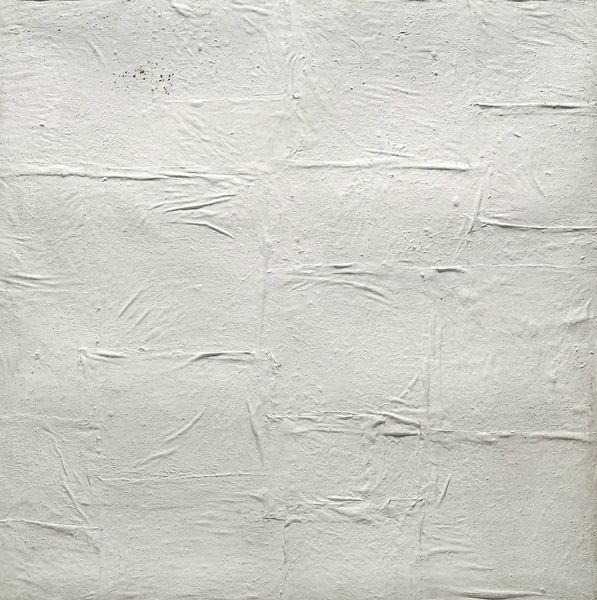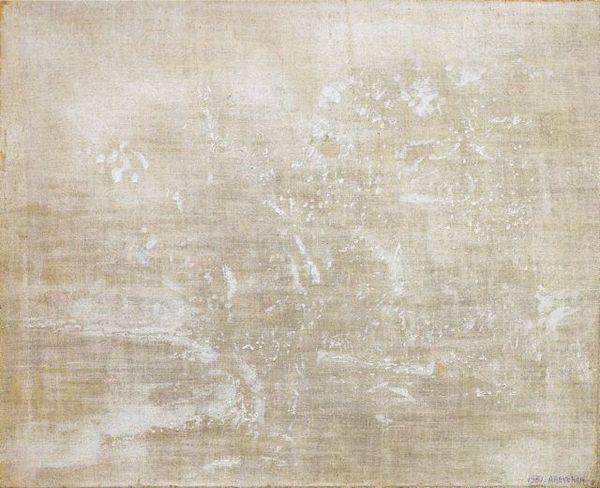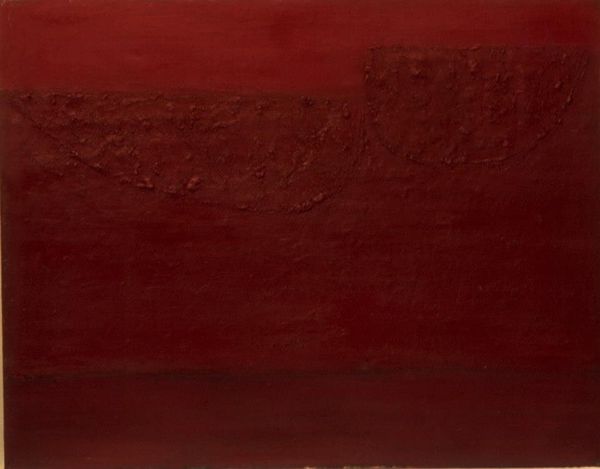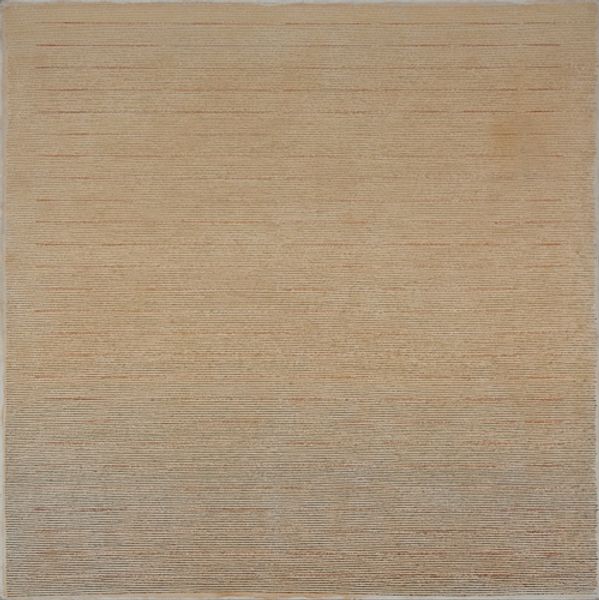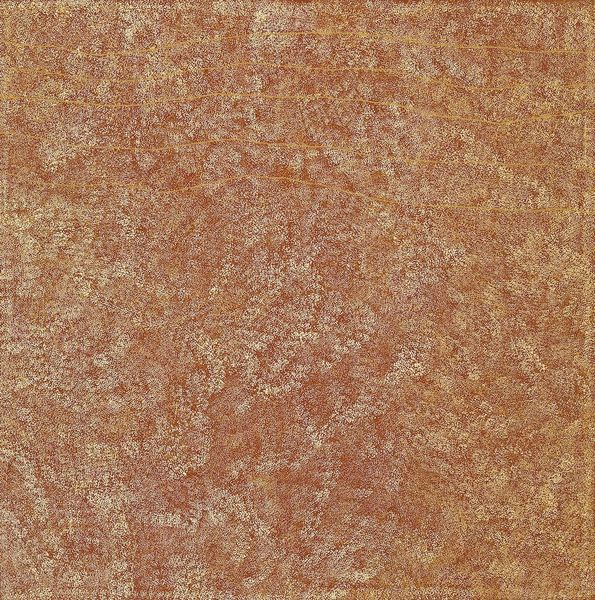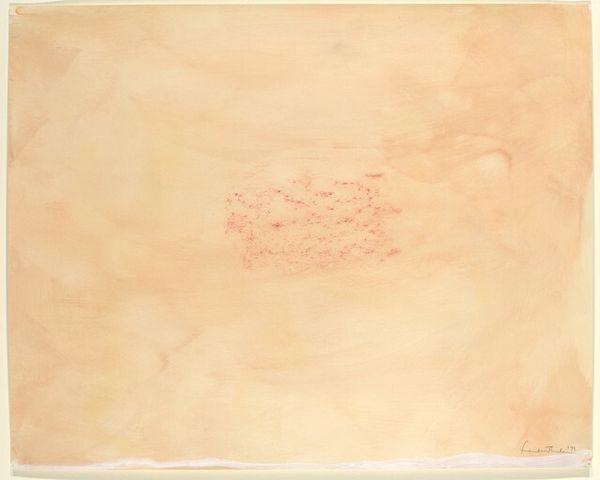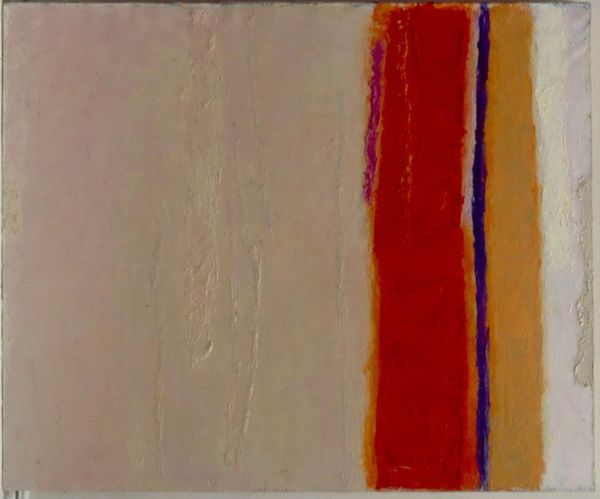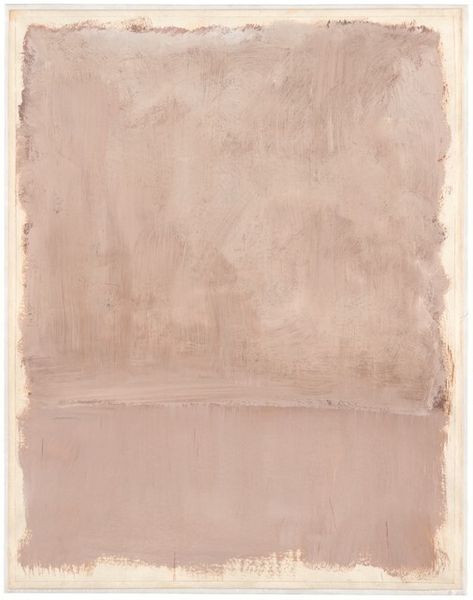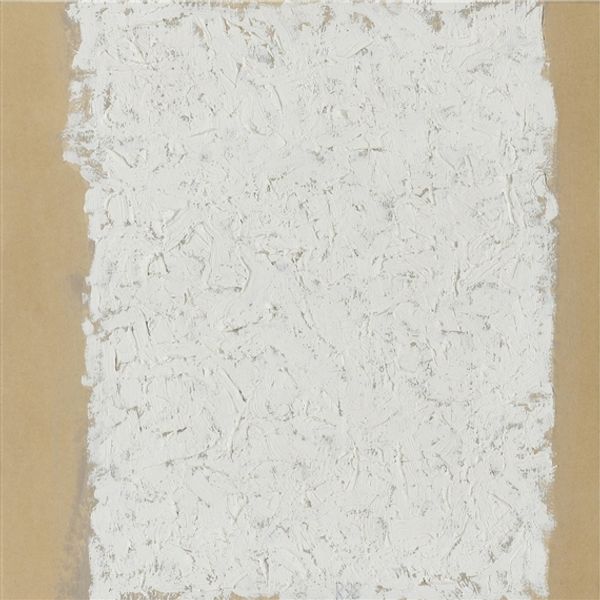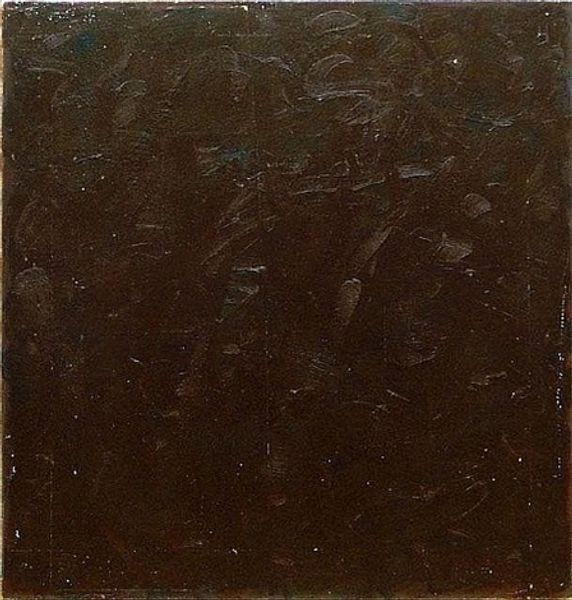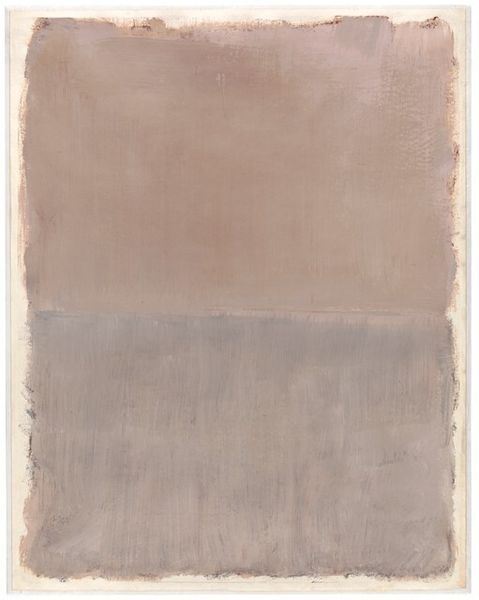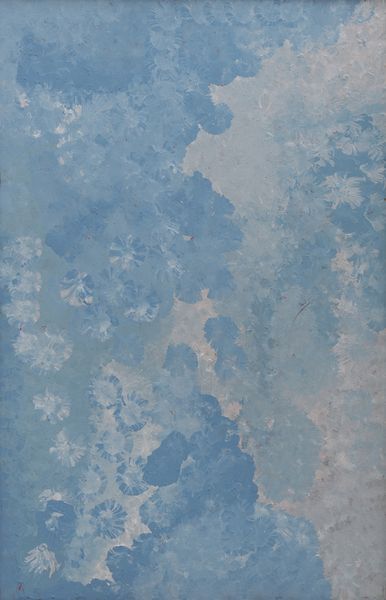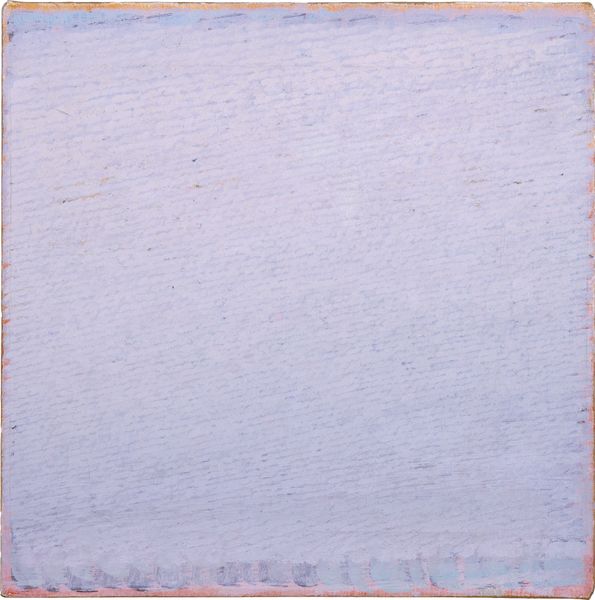
Dimensions: support: 2418 x 4575 mm
Copyright: © Jules Olitski/VAGA, New York and DACS, London 2014 | CC-BY-NC-ND 4.0 DEED, Photo: Tate
Curator: Here we have Jules Olitski's large-scale painting, "Solomon's Mirror No. 2," housed here at the Tate. Editor: My first thought is of a sun-baked wall in some ancient, forgotten city. It’s so tactile, almost like hardened clay. Curator: Olitski was deeply invested in the materiality of paint, wasn't he? He's known for building up these incredible surfaces, exploring texture and color relations. It’s a huge canvas, nearly 2.5 by 4.5 meters. Editor: Absolutely! And that pale, almost flesh-toned palette creates a sense of quiet introspection. You know, maybe a mirror isn’t about perfect reflection, but about seeing the history etched into our very selves. Curator: Right, and it moves beyond pure abstraction, challenging what a painting can communicate through its sheer presence. It's a testament to Olitski's innovation, pushing the boundaries of color field painting. Editor: It makes you wonder, doesn't it? What secrets are embedded in that seemingly simple surface, echoing stories of time and transformation? A powerful piece indeed.
Comments
tate 6 months ago
⋮
http://www.tate.org.uk/art/artworks/olitski-solomons-mirror-no-2-t07245
Join the conversation
Join millions of artists and users on Artera today and experience the ultimate creative platform.
tate 6 months ago
⋮
In 1972 Olitski returned to the smaller canvases and degree of impasto that had characterised his works of the 1950s. He roughened the canvas surfaces with gel and then, using a roller or squeegee, applied paint thickened with gel and, occasionally, small beads of synthetic resin. Sometimes he brushed or sprayed greyed or monotone colours on top. In his essay for Olitski's 1978 exhibition at the Andre Emmerich Gallery, New York, Neil Marshall wrote of the artist's return to impasto: It is Olitski's achievement to have arrived at a pictorial structure that is also a plastic structure. The peculiar pictorial logic of bas-relief is brought into a new relationship with the colour, and a kind of imagery is created that depends on the relations of colour with a plastic structure apparently independent of it. These relations constitute the structural logic of the pictures reproduced here.Olitski was very much concerned with sculpture during this period in his career. He had been given his first sculpture exhibition in 1969 by the Metropolitan Museum of Art, New York. The use of very thick impasto became a marked feature of Olitski's paintings of the 1980s and 1990s. As such, Solomon's Mirror No.2 is a work that both looks back to his Paris-inspired phase and anticipates later developments in his career.Further reading:Neil Marshall, Jules Olitski: New Paintings at the Andre Emmerich Gallery, exhibition catalogue, Andre Emmerich Gallery, New York, 1978Terry RiggsOctober 1997
